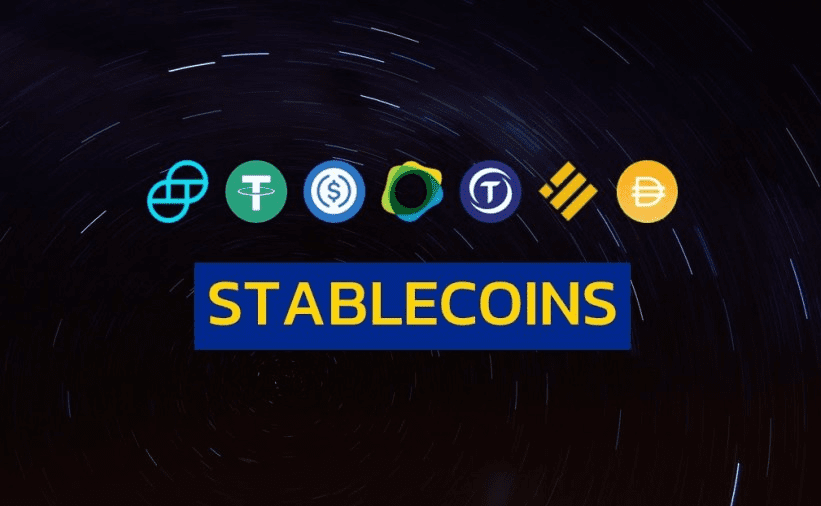A stablecoin is a cryptocurrency that is pegged to the enumerated stable asset, like gold or the U.S. dollar. In other words, Stablecoins are cryptocurrencies created to reduce the influences of price buoyancy. To reduce buoyancy the value of a stablecoin can be clinched to currency, or to exchange-traded assets (such as valuable metals or manufacturing elements. Stablecoins supported by currencies or assets undeviatingly is assumed to be centralized, whereas those leveraging other cryptocurrencies are decentralized.
There are three types of stablecoins:
Fiat-backed stablecoins.
Crypto-backed stablecoins.
Exchange commodities backed stablecoins
Fiat-backed stablecoins
Cryptocurrencies backed by fiat currency are the most popular and were the primary nature of stablecoins on the market. Their price is pegged to one or major currencies such as the US dollar in a decided proportion. In other words, fiat stablecoins are tokens which are linked with the price of a distinct fiat currency. Normally, these tokens are backed by the US dollar and keep their price solidified at a 1:1 rate.
They give comprehensive security compared to the buoyancy of other cryptocurrencies and variations in cost are least. They have a comparably simple to follow arrangement as the fiat-backed idea is uncomplicated.
Crypto-backed stablecoins
Cryptocurrency supported stablecoins are circulated with cryptocurrencies as security, which is somewhat alike to fiat-backed stablecoins. Still, the notable distinction between the two forms is that while fiat collateralization typically occurs off the blockchain, the cryptocurrency employed to support this sort of stablecoins is made on the blockchain, utilizing smart contracts in an extra decentralized style.
In many situations, these act by enabling users to gain a credit against a smart-contract via securing up the deposit, making it more profitable to pay off their mortgage. To counter unexpected crashes, a user who obtains a credit may be reimbursed by the smart contract.
In this, the price of the stablecoin is collateralized by different cryptocurrency or cryptocurrency holdings. The peg is performed on-chain via smart contracts, The accumulation of the stablecoins is directed on-chain, using smart contracts. The value durability is realized through the induction of additional means and reasons, not just the security.
Exchange commodities backed stablecoins
Stablecoins supported by assets such as high-priced metals (gold, silver etc) is quite comparable to fiat supported stablecoins. Their price is pegged to one or more exchange-traded assets, in a solidified ratio. The peg is accomplished off-chain, through controlled commercial organizations which work as caretakers of the assets supporting the stablecoin. The volume of exchange-traded assets utilized to support the stablecoin has to match the rotating accumulation of the stablecoin.
Owners of commodity-backed stablecoins can reclaim their stablecoins at the exchange rate to take ownership of existing assets. The charge of managing the balance of the stablecoin is similar to the value of securing the support assets of the exchange-traded assets and the charge of the constitutional agreement, managing permits, examiners and the market foundation required by the regulator.
Security in Unpredictable Markets
In most cases, stablecoins frequently have an advantage for investors and traders who want to stop and initiate crypto points as efficiently as feasible. A credible stablecoin gives immediate reimbursements that are financed by fiat without being an unproductive as fiat.
Coins like Bitcoin and Ethereum are extremely unpredictable. On any day, it is normal to observe an increase to 15-20% or even a drop.
That makes applying most cryptocurrencies for regular transactions disturbing. Advocates for stablecoins have claimed that these tokens work as a comprehensive basis in order to meet the fundamental components of what makes up a currency.
This implies they give a mechanism of exchange, a repository of value and a part of the record. Moreover, stablecoins give the advantages of the blockchain based tender while bypassing the built-in buoyancy of cryptocurrencies.
On the other hand, many people have debated that currencies such as the US Dollar are not sufficient security owing to their individual inflationary landscape. Because of this, the stablecoins are not a good explication to the very identical enigma at Bitcoin is attempting to resolve.
In extension, it could be assumed that because the fiat-pegged proportion is so fully acquired from a widespread tender, the stablecoins quite well be administered by the nation’s constitutional monetary laws.
Disclaimer: This information should not be interpreted as an endorsement of any cryptocurrency. It is not a recommendation to trade. The crypto market is full of surprises and overhyped assets. Do your research before buying anything. Do not invest more than you can afford to lose.


